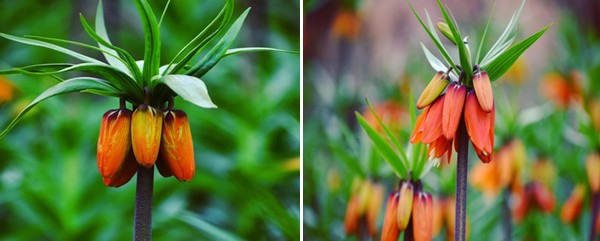Fritillaria Imperialis, commonly known as the Crown Imperial or Kaiser's Crown, is a majestic and rare flowering plant that belongs to the family Liliaceae. It is native to the mountainous regions of Central Asia and is widely cultivated for its showy, bell-shaped flowers and stately appearance.

Photo by Reyaz Ahmad Bhat
The Crown Imperial plant can grow up to three feet in height, with a single, thick stem that bears a crown of up to ten nodding flowers, each up to four inches wide. The flowers come in various shades of orange, red, yellow, and sometimes even green. The plant's foliage is made up of lance-shaped, dark green leaves that grow in whorls around the stem.
Crown Imperial is a bulbous plant, and its bulbs are among the largest of all bulbs, weighing up to a pound each. The bulbs have a strong odor that deters pests and rodents, and this quality has made the plant popular in gardens as a natural pest repellent.
The Crown Imperial has a rich history, and it was once a symbol of royalty and power. In the 16th century, the plant was known as Kaiser's Crown in Germany and was used extensively in royal gardens. In the Ottoman Empire, the plant was used to adorn palaces and gardens, and it was believed to have magical and medicinal properties.
Growing Fritillaria Imperialis can be challenging, as the plant requires specific growing conditions. It thrives in well-draining, fertile soil that is rich in organic matter and prefers partial to full sunlight. It is a hardy plant and can withstand cold temperatures, making it an ideal choice for gardeners in colder climates.
In conclusion, Fritillaria Imperialis is a majestic and rare plant that adds a touch of grandeur and elegance to any garden. Its distinctive appearance and rich history make it a prized possession among gardeners and collectors alike. Despite its challenges in cultivation, the Crown Imperial remains a beloved plant that continues to enchant and inspire people around the world.
For more information:
Reyaz Ahmad Bhat
Ph.D. Floriculture and Landscape Architecture
Skuast Kashmir, Shalimar Srinagar, 190025
Email: bhatriaz.2012@gmail.com
